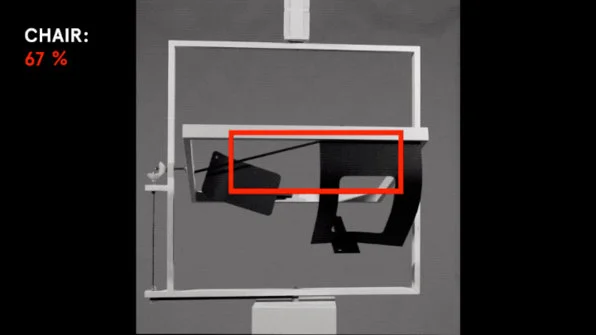Designers collaborate with artificial intelligence every day. But generally they do through programs like Adobe Photoshop, which has nifty tools that automate some of the tedious aspects of design.
Now imagine if AI weren’t just in the background, but instead acted like an equal collaborator in the design process?
To explore this idea, Toronto-based design research company Radical Norms worked with a computer vision algorithm, powered by a Google API, to design a chair. For the project, called 100% Chair, the designers attached two-dimensional silhouettes of chair parts to a rotating machine. A camera watched the rotations and a computer vision algorithm assessed the percentage probability that it was looking at a chair.
The camera took screenshots of each composition and tagged it with what percentage of chair the computer saw–one image might be only 6% chair, while another might be 42% and a third could be 96%.
The designers then used these screenshots almost like design briefs, with the goal of designing a physical chair that would match the percentage in the image. One of their prototypes looks something like a stool, with a long spindly black leg jutting out from a plywood seat–it’s 78.2% chair. Another, which the computer reads as 24.6% chair, is very low to the ground, with one hefty wooden leg and a very tall, thin yellow one.fl



